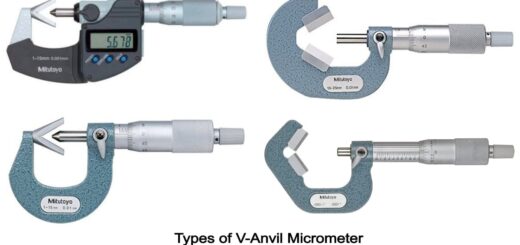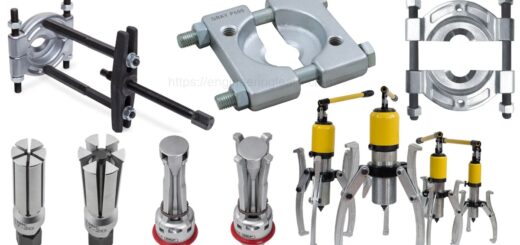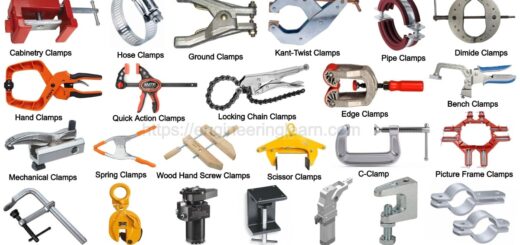Spirit Level (Tool) – Definition, Types, Parts, Structure & How to Use Spirit Level [Explained]
![Spirit Level (Tool) - Definition, Types, Parts, Structure & How to Use Spirit Level [Explained]](https://engineeringlearn.com/wp-content/uploads/2022/06/Spirit-Level-1024x539.jpg)
What is a Spirit Level?
Spirit Level (Tool) – Definition, Types, Parts, Structure & How to Use Spirit Level [Explained]: – A spirit level is a device used to check the level of surfaces, particularly tabletops. A basic bubble instrument is a spirit level. It’s an angular measurement device where the bubble always rises to the highest point of a glass vial fixed on the Spirit Level’s top surface. The Spirit Level is simple to determine; all we have to do is follow the movement of the bubbles. Cover two digits of a scale of one side in our figure bubble, for example, which signifies the actual inclination is 0.02 per unit. The reference plane, seated on the machine part for which straightness or flatness is to be assessed, is the Spirit level’s base. The bubble lies in the centre of the graded scale engraved on the glass when the base is horizontal. ( Types of Measuring Instruments )
Structure of Spirit Level
The base ruler of a spirit level has a hollow chamber and a levelling bubble unit. A bubble tube, a bubble tube base, and a fixing base are included in the levelling bubble unit. The bubble tube base has a limit slot in the fixing base. The levelling bubble unit is set as an inlaying opening on the base ruler at this location. The levelling bubble unit’s fixing base is placed within the hollow chamber in a sinking style so that the tip end of the fixing base is retained inside the inlaying opening when the fixing base is placed into the hollow chamber. Adjustable clasps are designed on both sides of the top of the fixing base, with the tip end of the elastic clasp having a slant resisting surface to resist against the corner of the inner wall of the inlaying opening.
Parts of Spirit Level
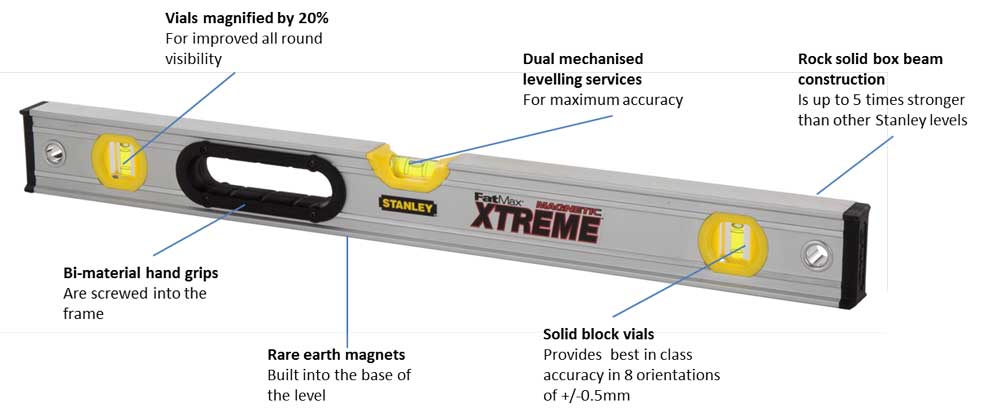
1. Handles
The screening level is more ergonomic and easier to use with the handles. Rather than external add-ons, they usually take the shape of slots within the tool. This implies they’ll last longer and won’t get in the way of the tool’s straightness. Some screeding levels include a handle attached to the top of the level, which is usually for industrial use.
2. End Caps
The screeding level is hollow, making it lighter, but the ends are open unless you install plastic end caps. These keep debris out of the tool, making it dirty and heavy.
3. Vials
Some screeding levels come with containers that look like those on spirit levels. These are spirit-filled tubes that have been left half-empty to form a bubble that can be used to determine whether or not a surface is a level.
They’re helpful as a screening tool to ensure the instrument is used correctly to lay flat flooring. Some screeding levels include three vials with varying angles, horizontal, vertical, and 45 degrees. The 45-degree vial, on the other hand, is being phased out and may finally vanish.
Types of Spirit Levels
- Box Beam Spirit Level
- Digital Box Level
- Magnetic Box Level
- Screed Level
- Torpedo Level
1. Box Beam Spirit Level

This spirit level is widely regarded as the most versatile and common. This is also known as a box level. Box beam levels are composed of aluminum and are usually rectangular or box shaped. Some may be constructed of wood or carbon fibre as well.
2. Digital Box Spirit Level
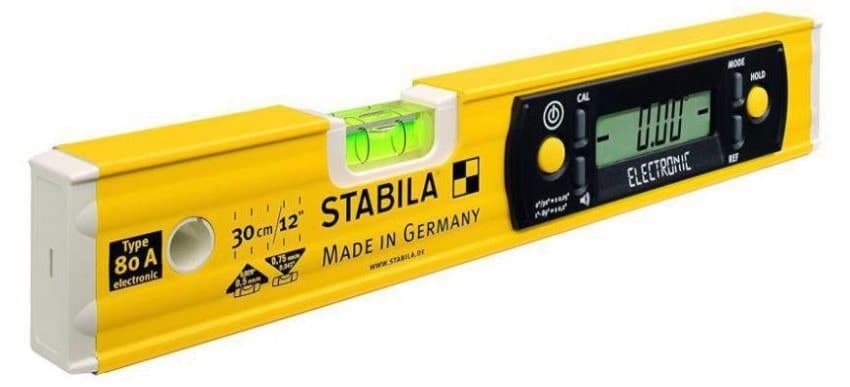
This is the same as a standard box beam level with the addition of a digital indicator. Put it another way; you get a small display that tells you the measurement of whatever you’re levelling down to the fourth decimal place. This enables exceedingly accurate measuring. Getting one with a digital readout is a good option if you don’t enjoy reading the vials on normal spirit levels. It’s just a tiny little that makes life a little simpler.
3. Magnetic Box Spirit Level
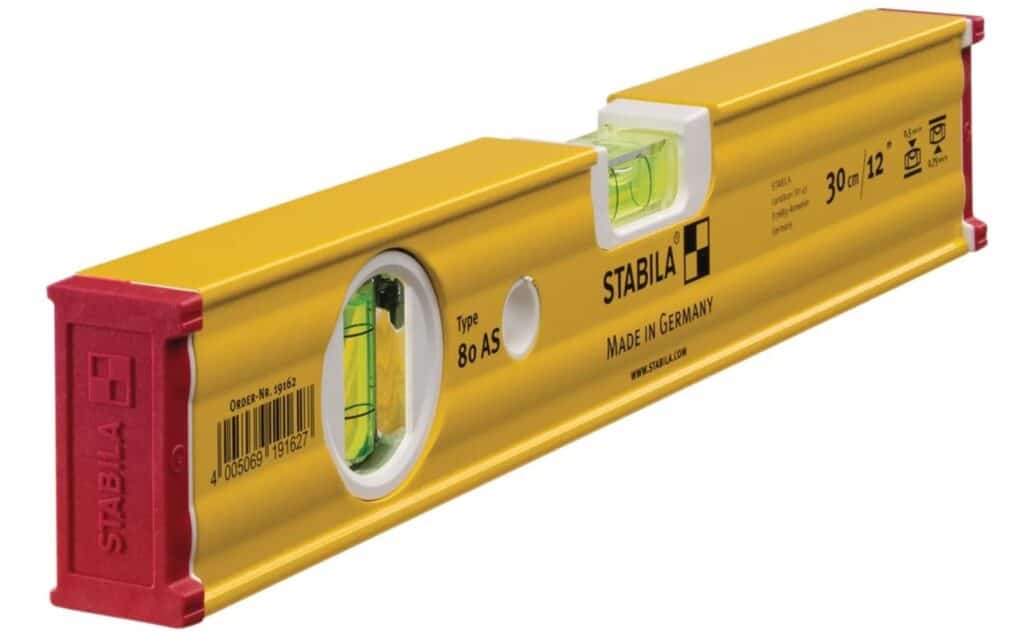
This is the same as a box beam level, but with magnets added to allow it to attach to metallic objects. A magnetic box level is a way to go if you’re working with metallic surfaces and need to level them frequently.
4. Screed Spirit Level
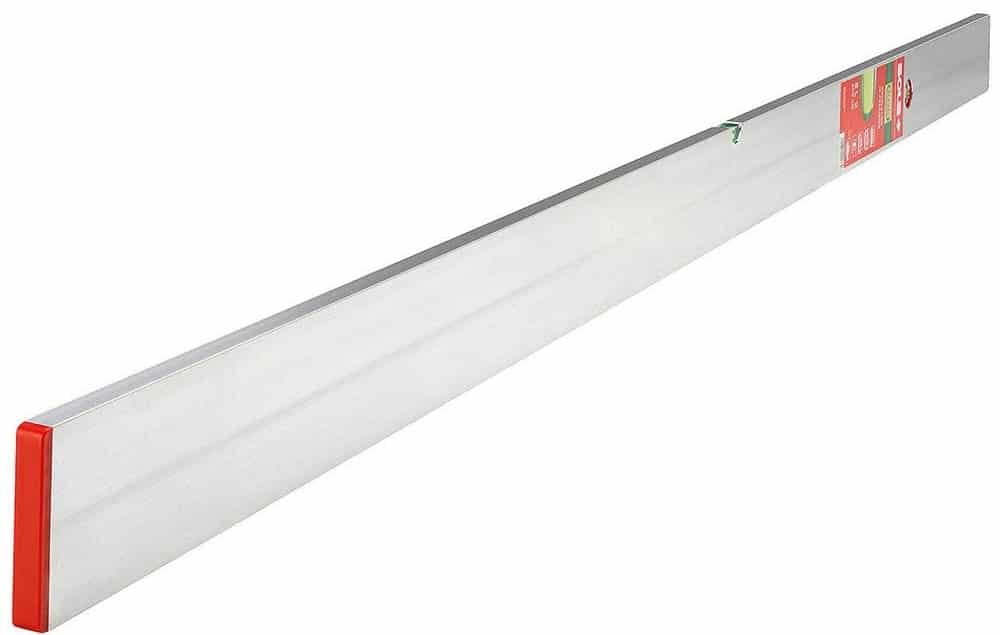
This bubble level is frequently used when laying flooring, especially concrete and cement foundations. They’re also utilised in landscaping to level the ground. Metal is commonly used to create this type of bubble level.
5. Torpedo Spirit Level

Torpedo levels are similar to box beam levels but are typically composed of plastic rather than metal. Another distinguishing trait of torpedo levels is their small length, usually less than a foot.
Sensitivity of the Spirit Level
The spirit levels’ sensitivity is expressed as an inclination angle, such as 30 minutes or 0.5 degrees. This is the inclination angle at which the level must be angled to travel 2 mm. Compared to a spirit level with a sensitivity of 30 angle minutes, a spirit level with a sensitivity of 6 angle minutes has higher sensitivity. Sensitivity is also expressed as millimetres per metre, the variation in level per unit of length.
How to Read a Spirit Level
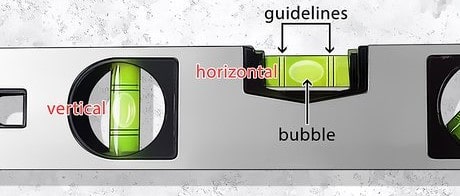
- Locate the level’s bottom edge. This sits on top of the surface you’re attempting to level.
- Some varieties of the Johnson Level torpedo level include magnetic edges that “stick” to metal surfaces for easy use.
- Examine the level’s body for grasping areas where you won’t be able to block the vials with your hand.
- At least one end of most levels has a punched hole for hanging above your workbench.
- The tube vial in the level’s centre aids in determining the true horizontal.
- The tube vials find the actual vertically on the ends.
- There is an angled tube vial on many torpedo levels and other specialised levels to find the level at 45°.
How to Use a Spirit Level
- Remove all dirt particles from the borders of the level.
- Draw a line along the wall’s bottom edge.
- Invert the level such that the bottom is now the top. Place the new top edge of the new top edge along the specified line. Your level is accurate if the bubble is in the middle. If it doesn’t, it’s faulty.
- Place the level on the object’s surface whose real horizontal you want to determine. Ascertain that the spirit tube is parallel to the item. Let the bubble reach the top of the spirit tube by allowing it to float.
- Raise your eyes to the same level as the spirit tube. Close one eye to get an accurate reading.
- Make a mental note of where the bubble is located within the spirit tube. If your thing is centred between the lines on the tube, it is level. Your item slopes downward right-to-left if the bubble is to the right of the lines. Your item slopes downward left-to-right if the bubble is to the left of the lines.
- Repeat the process vertically to determine the true vertical or “plumb.”
Conclusion
Other functional spirit level properties include magnetism, vial type, durability, and style and material. Some spirit levels are magnetic, making them excellent for use in metal stud construction or by plumbers and electricians working with pipelines and cables. The strength of a magnet vs the weight of a spirit level is an important measure of quality; rare earth magnets are the strongest. Some spirit levels, such as i-beam levels with barrel-shaped vials set into the frame or wood levels with banana-shaped vials, include removable vials. Block vials on box beam levels are machine set and cannot be replaced with the same level of precision.
Image Source:- wikihow, fruugoindia, stabila, kseibi
